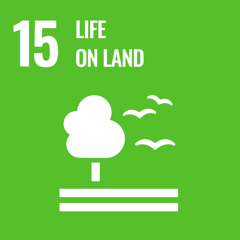When identifying areas for Christmas tree production, explicit consideration is given to the aquatic environment, culture and ancient monuments. In addition, only a few Christmas trees are grown in forest areas, while all Christmas tree properties must meet demands for forest and untouched nature to ensure habitats for insects, birds, plants and fungi.
Around and on the site of production itself, there are requirements for borders with trees or shrubs and windbreaks, which are supplemented with wildlife corridors on tracks and headlands. These are cut in August at the earliest. Finally, wildflower corridors are required along roadsides and field edges to provide good habitats for insects and fauna.
At the end of the Christmas tree rotation, tillage is not performed, only superficial crushing to protect soil-dwelling organisms and preserve CO2 in the roots of the plants.









